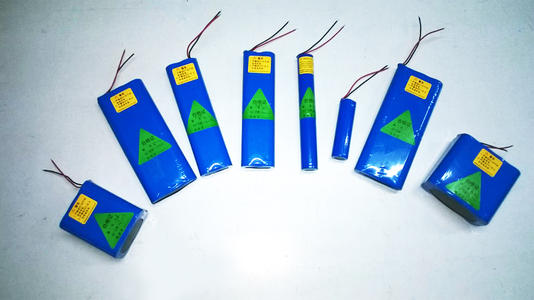- Home
- Products
- Elementary
- Boride Powder
- 3D Printing Powder
- Sulfide Powder
- Oxide Powder
- Carbide powder
- Nitride Powder
- Silicide Powder
- Hydride Powder
- Telluride Powder
- Selenide Powder
- Stearic Acid Series
- Phosphide Powder
- Nanoparticles
- Metal Alloy
- MAX Phase
- Lithium Battery Anode
- Surfactant
- Molecular sieves
- Concrete Admixtures
- News
- Answers
- Contact
- About
Answers
- 0
- 0
Progress in the field of research on anode materials for lithium-ion batteries
If you are looking for high-quality products, please feel free to contact us and send an inquiry, email: brad@ihpa.net
Gold is a high-quality hedge hedging tool, favored by investors. Especially in recent years, with the increasing instability of the world economy, gold has become one of the preferred asset allocations of investors because of its functions of hedging and fighting inflation.
Earlier, the worsening situation in Ukraine sent gold prices soaring to a two-year high of $2,070 an ounce. But gold, along with other commodities, fell back last week as conditions changed and bulls took profits, hitting a low of $1,895 an ounce. Rising gold prices may also have an impact on the Lithium-ion batteries prices.
According to China Business News, Goldman Sachs raised its gold price forecast in early March, considering Asian buyers' gold consumption demand, investment demand and central bank gold purchase demand continue to rise. Three -, six - and 12-month targets were raised to $2,300, $2,500 and $2,500 an ounce, respectively, from $1,950, $2,050 and $2,150. The last time all three accelerated was in 2010-11 when gold prices rose nearly 70%.
The World Gold Council has also noted that global gold demand is at its highest level in nearly two years, which is linked to a recovery in consumption and consumer sentiment to combat inflation.
Lithium-ion batteries have become hotspots in energy research due to their higher energy density, long service life, and smaller volume compared with lead-acid, nickel-cadmium, nickel-metal hydride, and other batteries, and no memory effect. One. The negative electrode material is one of the critical components of lithium-ion batteries. It acts as the acceptor of lithium ions and realizes the insertion and extraction of lithium ions during the charging and discharging process. Therefore, the quality of the negative electrode material directly affects the overall performance of the lithium-ion battery. Graphite and modified graphite are widely used as anode materials for commercial lithium-ion batteries. Still, their theoretical capacity is only 372mAh/g, which significantly restricts the development of high-energy power batteries. Group IV element (silicon, germanium, tin)-based anode materials have become a research hotspot for next-generation lithium-ion batteries due to their high theoretical capacities (3579mAh/g, 1600mAh/g, 994mAh/g, respectively). However, silicon, germanium, and tin-based anode materials have the problem of significant volume expansion during the charging and discharging process. Long-term charging and discharging will cause the pulverization of particles and the shedding of active materials, thus affecting the cycle stability of lithium-ion batteries.

In recent years, the advanced lithium-ion battery team led by Han Weiqiang, a researcher at the Institute of New Energy Technology affiliated with the Ningbo Institute of Materials Technology and Engineering, Chinese Academy of Sciences, has made a series of progress in high-capacity silicon, germanium, and tin-based anode materials. In terms of high-performance silicon-based anode materials, researchers have developed a low-cost, high-capacity, and high-stability porous silicon-based anode material technology. By carbon coating, the porous silicon, the performance of the silicon-based negative electrode material for lithium-ion batteries is further improved. The capacity retention rate of the silicon-carbon composite electrode material was 86.8% after 300 charge-discharge cycles. Related research has applied for Chinese invention patents (201410150747.5, 201410276413.2), and the research results were published in NanoEnergy (2015, 11, 490-499) in the form of Communication.
Based on the previous work, the team synthesized and prepared a series of new phase MSn5 (M=Fe, Co, Fe0.5Co0.5) alloy nano-anode materials using the wet chemical method of improving polyols. The synthesized FeSn5 alloy nanoparticles have a theoretical capacity of 929mAhg-1 when used as a negative electrode material for lithium-ion batteries, which is the material with the highest theoretical specific capacity among the reported M-Sn (M is an electrochemically inert metal) alloy. The researchers prepared a series of Fe0.5Co0.5Sn5 new phase alloy nanoparticles with a 30-50nm particle size range, which further expanded the Co-Fe-Sn phase diagram. Related achievements have applied for invention patents (2013104705134, 201310706760X, 2103715406A). At the same time, the charge-discharge mechanism was deeply discussed and explained by in-situ XAFS, in-situ XRD, and electrochemical test methods. The research on the electrochemical mechanism of this series of tin-based new phase alloy anode materials provides effective theoretical guidance for the team's subsequent development of high-performance tin-based anode materials. Relevant results were published in JournalofMaterialsChemistryA (2015, 3(13):7170-7178) and ACS Appl.Mater.Interfaces (2015,7,7912-7919).
The team has also made progress in the research and development of long-life titanium-based anode materials, applying for an invention patent (201310685139. X), and the relevant results were published in the Journal of Materials Chemistry (2014(2), 10599-10606).
High-quality lithium-ion batteries supplier
Luoyang Moon & Star New Energy Technology Co., LTD, founded on October 17, 2008, is a high-tech enterprise committed to developing, producing, processing, selling, and technical services of lithium-ion battery anode materials. After more than 10 years of development, the company has gradually developed into a diversified product structure with natural graphite, artificial graphite, composite graphite, intermediate phase, and other negative materials (silicon-carbon materials, etc.). The products are widely used in high-end lithium-ion digital power and energy storage batteries. If you are looking for Lithium battery anode material, click on the needed products and send us an inquiry:sales@graphite-corp.com.
Overall, the demand for Lithium-ion batteries is on the rise, and future Lithium-ion batteries will continue to evolve. Although the prosperity of the brand name has rebounded, there are still many outstanding problems in Lithium-ion batteries, and the Lithium-ion batteries will develop steadily,if you need Lithium-ion batteries please contact us.
Inquiry us
PREVIOUS NEWS
What exactly is graphene?
NEXT NEWS